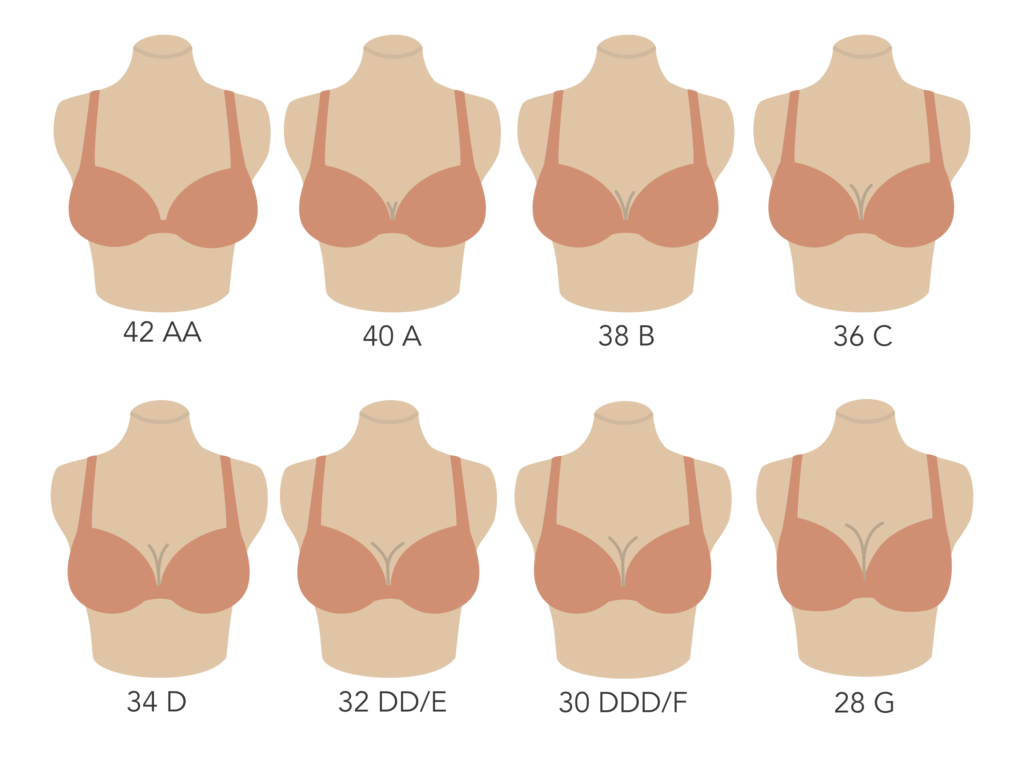The Ultimate Guide To Finding Your Perfect Cup Bra Size
Finding the right bra isn’t just about comfort—it’s about embracing your unique shape with confidence. Many women struggle with ill-fitting bras, unaware that the solution lies in understanding the precise mechanics of cup bras sizes. This guide will walk you through a scientific, evidence-based approach to determine your ideal fit, blending professional knowledge with practical insights to transform your lingerie experience.
The Science Behind Bra Sizing
Bra sizing operates on a combination of band and cup measurements, rooted in anthropometric principles. The band size corresponds to the circumference beneath your bust, while the cup size reflects the difference between this and your bust circumference. According to research from the University of Helsinki’s Department of Design, improper bra fit can lead to musculoskeletal discomfort, emphasizing the need for accuracy. For instance, a 2021 study highlighted that nearly 80% of women wear incorrect cup bras sizes, often due to outdated measuring techniques or reliance on vanity sizing. By adopting a methodical approach, you can avoid common pitfalls like spillage, gaping, or strap digging, ensuring the bra supports rather than constricts. This isn’t about adhering to arbitrary standards; it’s about honoring your body’s proportions with precision.

Step 1: Accurate Band Measurement
Begin by measuring snugly under your bust, ensuring the tape is parallel to the ground. This measurement, in inches, typically forms your band size—if it’s an even number, that’s your size; if odd, round up. As bra fitter and author Jene Luciani states in her book, “The Bra Book,” “The band provides 90% of a bra’s support, so getting this right is non-negotiable.” Avoid pulling too tight, as this can distort the reading and lead to a band that rides up. Instead, aim for a fit that feels secure without restricting breathing. Remember, band sizes can vary by brand, much like shoe sizes, so always refer to specific size charts. This step lays the foundation for determining the correct cup bras sizes, as an inaccurate band can throw off the entire fit.
Step 2: Calculating Cup Dimensions
Next, measure the fullest part of your bust, again keeping the tape level. Subtract your band measurement from this number—each inch difference corresponds to a cup size (e.g., 1 inch = A, 2 = B, etc.). The University of Portsmouth’s research on breast biomechanics notes that cup volume isn’t linear; a D cup on a 32 band holds less volume than on a 38 band, debunking the myth that cup letters are absolute. This relativity is crucial when selecting cup bras sizes, as it accounts for variations in body shape. For example, if your band is 34 inches and bust is 37 inches, the 3-inch difference points to a C cup, resulting in a 34C. However, factors like breast density or asymmetry might require trying sister sizes (e.g., 32D or 36B for a 34C) to achieve optimal comfort.
:max_bytes(150000):strip_icc()/how-to-measure-bra-size-chart-cup-size-finder-05f3c49d140c45acbf99d7ff16307e0d.jpg)
Step 3: Evaluating Fit and Comfort
Once you have your preliminary size, try on bras and assess key areas: the band should sit firmly on the loosest hook, the cups must encase breasts fully without wrinkling or overflow, and straps shouldn’t bear excessive weight. As noted on Quora by a certified lingerie specialist, “A well-fitted bra centers the bust between the elbow and shoulder, reducing strain on the back.” Pay attention to the gore—the center piece—which should lie flat against your sternum. If it doesn’t, the cup bras sizes might be too small or the style unsuitable for your shape. Additionally, move around in the bra; raise your arms or bend over to check for stability. This iterative process ensures the bra adapts to your daily activities, not just static poses.

Step 4: Addressing Common Misconceptions
Many believe that cup size is static or that larger breasts necessitate larger letters, but this ignores the interplay between band and cup. For instance, a 30F has similar cup volume to a 34D, illustrating how cup bras sizes are proportional. In the words of bra expert Tomima Edmark from HerRoom.com, “The cup letter is not a status symbol; it’s a measurement ratio.” Another myth is that bras should last forever—in reality, they wear out after 6-12 months of regular use, losing elasticity and support. By understanding these nuances, you can make informed choices, whether shopping in-store or online, and avoid falling for marketing gimmicks that prioritize trends over fit.
Step 5: Leveraging Professional Resources
Don’t hesitate to seek professional fittings or consult size calculators from reputable sites like Bare Necessities or ThirdLove, which use algorithms based on thousands of data points. As highlighted in a YouTube tutorial by lingerie designer Cora Harrington, “Your size can change with weight fluctuations, pregnancy, or aging, so regular reassessments are key.” Moreover, brands often offer discounts on foundational pieces—investing in a properly fitted bra can reduce the need for frequent replacements, saving money long-term. By combining self-measurement with expert input, you’ll master the art of selecting cup bras sizes that enhance both comfort and confidence.

Embrace this knowledge as a tool for self-care, not just a shopping checklist. The right bra can redefine how you carry yourself, turning everyday wear into an act of empowerment. Start your journey today—your perfect fit awaits.






